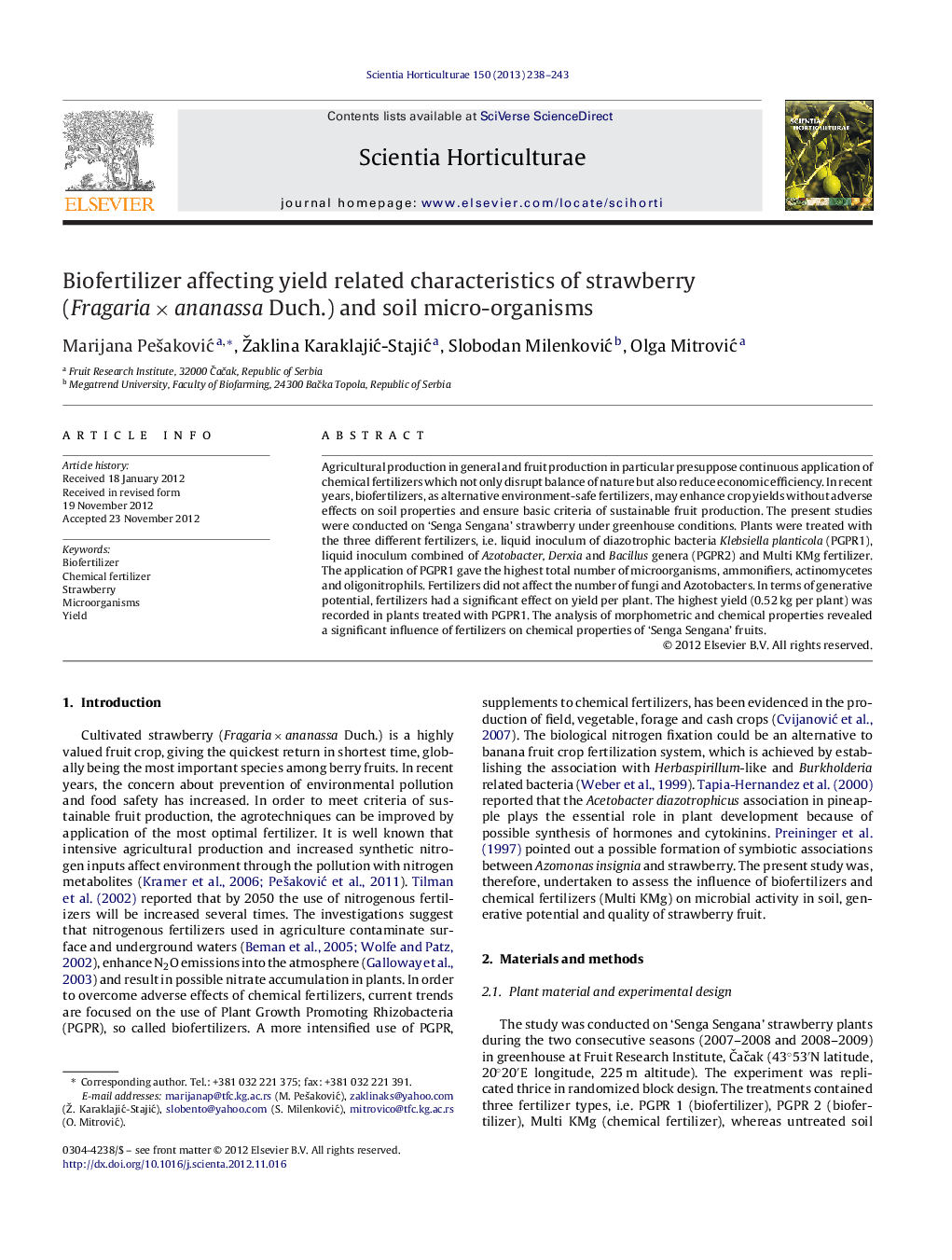| Article ID | Journal | Published Year | Pages | File Type |
|---|---|---|---|---|
| 4567277 | Scientia Horticulturae | 2013 | 6 Pages |
Agricultural production in general and fruit production in particular presuppose continuous application of chemical fertilizers which not only disrupt balance of nature but also reduce economic efficiency. In recent years, biofertilizers, as alternative environment-safe fertilizers, may enhance crop yields without adverse effects on soil properties and ensure basic criteria of sustainable fruit production. The present studies were conducted on ‘Senga Sengana’ strawberry under greenhouse conditions. Plants were treated with the three different fertilizers, i.e. liquid inoculum of diazotrophic bacteria Klebsiella planticola (PGPR1), liquid inoculum combined of Azotobacter, Derxia and Bacillus genera (PGPR2) and Multi KMg fertilizer. The application of PGPR1 gave the highest total number of microorganisms, ammonifiers, actinomycetes and oligonitrophils. Fertilizers did not affect the number of fungi and Azotobacters. In terms of generative potential, fertilizers had a significant effect on yield per plant. The highest yield (0.52 kg per plant) was recorded in plants treated with PGPR1. The analysis of morphometric and chemical properties revealed a significant influence of fertilizers on chemical properties of ‘Senga Sengana’ fruits.
► Strawberry was treated with biofertilizers (PGPR1, PGPR2) and chemical fertilizer. ► The application of PGPR1 gave the highest number of soil microorganisms. ► Fertilizers did not affect the number of fungi and Azotobacters. ► In terms of generative potential, fertilizers had a significant effect only on yield per plant. ► Type of fertilizers significantly influenced chemical properties of fruit.
